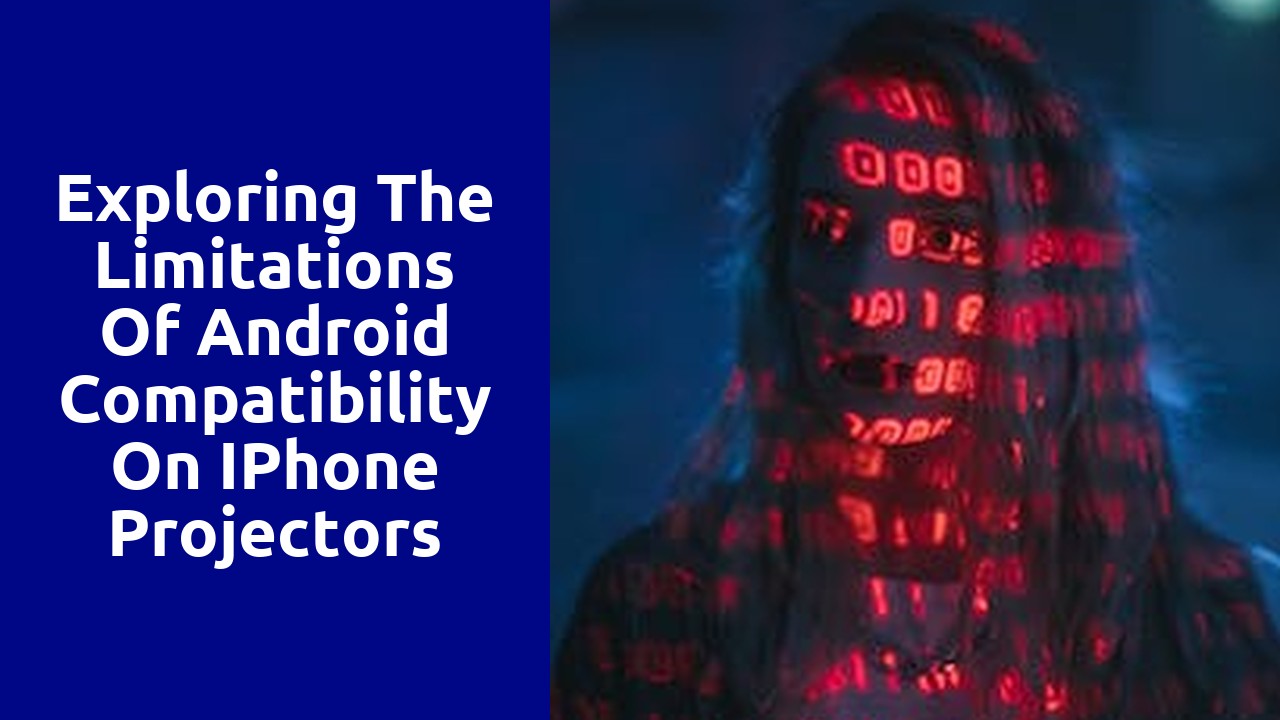

As technology continues to evolve, so do our ways of sharing information and connecting devices. One of the challenges that many individuals face is connecting Android devices to iPhone projectors. The incompatibility between these two systems poses a significant hurdle, requiring users to find alternative methods to achieve the desired connection.
The main issue lies in the fundamental differences between Android and iOS operating systems. While Android devices offer a wide range of options for connecting to various devices, the same cannot be said for iPhone projectors. The proprietary nature of Apple's system limits compatibility and makes it difficult for Android users to seamlessly connect their devices. This situation often leaves users frustrated and searching for workarounds that may not provide the optimal solution.
Android and iPhone projectors have become increasingly popular as a convenient way to display content from mobile devices onto a larger screen. However, one common challenge that users often encounter is the compatibility issues between Android and iPhone projectors. These compatibility issues arise due to the differing operating systems and technologies used by Android and iOS devices. While both Android and iPhone projectors essentially serve the same purpose of projecting content, the way they communicate and connect with mobile devices can vary significantly.
Android projectors typically use a standard USB connection or an HDMI port to establish a connection with Android smartphones or tablets. This seamless integration allows Android users to easily mirror their device's screen onto the projector and enjoy a hassle-free experience. On the other hand, iPhone projectors often require additional adapters or cables to connect with iOS devices such as iPhones or iPads. This is because Apple devices use a proprietary connector called Lightning, which is not compatible with the standard USB ports found in most projectors. As a result, iPhone users may need to purchase a Lightning to HDMI adapter or other specialized accessories to establish a connection between their device and the projector.
Android and iPhone projectors may appear similar on the surface, but a deeper exploration reveals several technical differences. One of the key distinctions lies in the operating systems used by these devices. Android projectors typically run on the Android operating system, which offers a wider range of customization options and compatibility with various apps. On the other hand, iPhone projectors run on the iOS operating system, renowned for its streamlined user experience and seamless integration with other Apple devices.
Another significant difference between Android and iPhone projectors is the hardware they employ. Android projectors often boast a wider range of connectivity options, including HDMI, USB, and Bluetooth, enabling easy connection to various devices and external peripherals. Conversely, iPhone projectors tend to rely on proprietary connectors and adapters, limiting their compatibility to Apple devices. This hardware distinction can be an important factor to consider, depending on your specific requirements and the devices you plan to connect to the projector.
In the world of technology, compatibility issues are a common obstacle that users often encounter. One such challenge arises when trying to connect an Android device to an iPhone projector. As we know, Android and iOS are two distinct operating systems with different software frameworks. Therefore, it is not surprising that these devices may not seamlessly communicate with one another. However, innovative solutions have emerged to tackle this problem, enabling Android users to enjoy the convenience and features of iPhone projectors.
An effective workaround for Android compatibility on iPhone projectors involves the use of third-party applications. These applications act as intermediaries, bridging the gap between the Android device and the iPhone projector. By installing a compatible app on their Android device, users can overcome the incompatibility and establish a connection with the projector. These apps often offer a range of functionalities, allowing users to stream content, display presentations, and even mirror their Android screens on the iPhone projector. While this solution may require an additional step, it provides Android users with a viable option to enjoy the benefits of iPhone projectors without having to switch devices.
In today's fast-paced technological world, operating system updates are a common occurrence for smartphone users. While these updates bring along several enhancements and security features, they can sometimes disrupt the compatibility with external devices such as iPhone projectors for Android users. This has raised concerns among individuals and organizations alike, who heavily rely on seamless connectivity between their Android devices and iPhone projectors for various professional and personal purposes.
The primary issue arises from the fact that different operating systems, namely Android and iOS, follow different protocols and standards when it comes to connectivity. Android's open-source nature allows for greater flexibility and customization, but it also means that Android devices may not always align perfectly with the strict guidelines set by Apple for iOS devices. Consequently, with each operating system update, there is a likelihood of compatibility issues arising between Android smartphones and iPhone projectors, resulting in potential frustrations for users seeking to display their content on a larger screen.
When it comes to projecting content from an iPhone onto an Android-compatible projector, there are a few noteworthy third-party apps and solutions that warrant exploration. These applications provide users with the ability to seamlessly connect their iPhones to Android projectors, ensuring compatibility and a hassle-free projection experience.
One popular option is the AirScreen app, which enables wireless mirroring of an iPhone screen onto an Android-compatible projector. This app leverages the AirPlay technology embedded in iOS devices, allowing users to effortlessly transmit audio, video, and even mirrored gameplay from their iPhone to the projector. With AirScreen, compatibility issues between iOS and Android are a thing of the past, making it a practical choice for those looking to project content from their iPhones onto an Android-compatible projector.